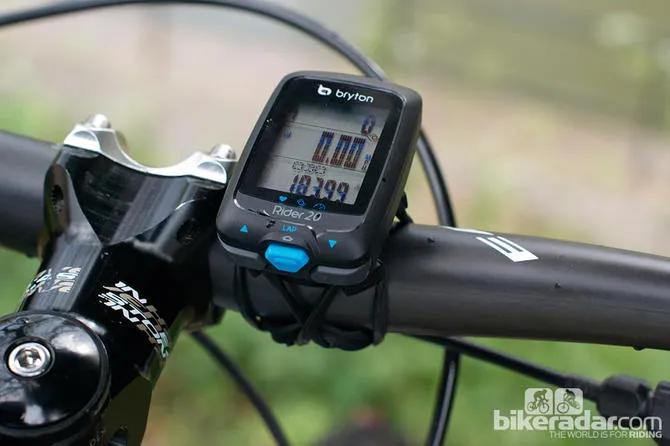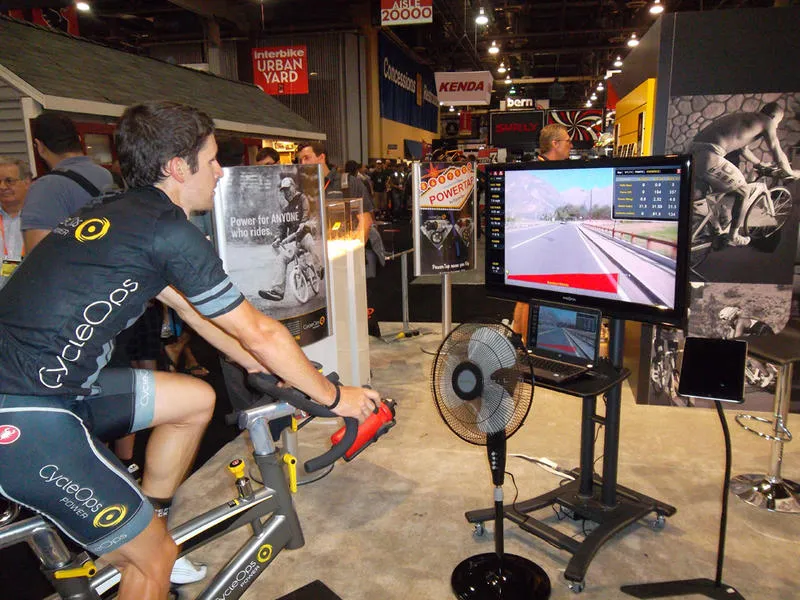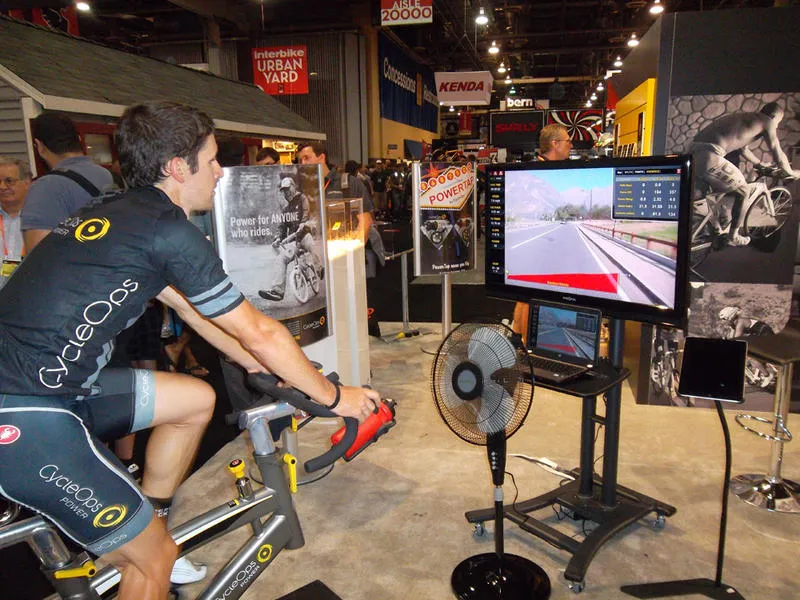With the introduction of GPS computers, electronic shifters and virtual trainers that turn an HDTV into an immersing workout, it’s easy to think cycling has gone high-tech. Not to mention space age materials including titanium and carbon fiber, or the ability to use a 3D printer to produce components.
But first we must step back and realise that the bicycle itself is a fairly complex machine in its own right. The first bikes were created thanks to the Industrial Revolution of the 1800s, and with their steel frames and rubber tires they simply couldn't have been developed a century earlier.
Bicycles have continually been moving forward, with better materials appearing and improvements in components such as gears and brakes seemingly endless. Recently, high-tech electronic components have changed the way we ride as well. This has put cyclists on a type of hamster wheel, always chasing the new.
Just as people line up for the next iPhone and Xbox, cyclists are caught up in the 'next generation' as well – in terms of new frames and wheels but also the latest heart rate monitors, power meters, apps, training websites, helmet cameras and more. Here, we take a look at some of these innovations…
Tracking your workout
One of the technologies that's seen the most innovation in the past decade has been the bike computer. While the first models were nothing more than analogue speedometers, riders can now track virtually every aspect of their ride – distance, maximum speed, average speed, calories burned, time spent pedalling, average gradient and even power.
The technology has seen a major boost in recent years, as Garmin and others have jumped on the GPS bandwagon. We might take this technology for granted now, but just 40 years ago it didn’t even exist, and two decades later it was mostly in the military domain.
A GPS (Global Positioning System) unit uses space-based satellite navigation. This was developed in 1973 to overcome limitations of existing navigation systems, and was created by the United States Department of Defense. Interestingly, it didn’t become fully operational until the Nineties but was quickly upgraded and made available for civilian use in 1998. Almost 15 years later, it's changed the way people drive and cycle.
The cycling computers that were developed in the 1990s often required calibration based on wheel/tire size, and this often meant two riders on identical bikes with identical tires and the same computer could get different distance and speed results. GPS solved this problem and opened up possibilities for all sorts of information to be recorded.
Just 10 years ago it would have required much more than a handlebar mounted device to accurately measure the grade of a climb, but now the Garmin Edge line of computers, along with most Android and iOS apps, can provide that data.

Bryton are one of the big players in the bike GPS market
“We can track a number of factors, including time, distance, speed, pedal cadence, power and heart rate,” said triathlon coach Dillon Martin. “With GPS and cellular we started tracking these on a continual basis so we can view an HR graph over the course of a bike ride vs just a lap or total average. We are also now using these measurements to compute training stress and intensity factors for each workout, to make sure we don't over- or undertrain.”
In some ways, all this information can help riders stay motivated.
“It’s not only the tracking that's keeping people motivated but the community support most of these trackers have created,” said Julie Sylvester, co-producer at Living in Digital Times, a group focusing on lifestyle trends in consumer electronics. “Whether it's a reward or point systems, donations to charities or just the visual 'Atta girl', they all make people want to try harder to be fit.”
But is there such a thing as too much information? Possibly, at least when riders pay more heed to what the data says than what their own bodies are telling them.
“For training and racing it’s very important to pay attention to the numbers, though I understand looking down at the watch can take away from the experience,” Martin told BikeRadar. “One way to counter this is to think about your goals and the purpose of each workout.”
“If you go out with a group of friends on a bike ride, then have fun,” he added. “Stick your watch or computer in the jersey pocket and don't look at it. At other times you just need to teach your body to suffer. Pro athletes have to learn what it feels like to really suffer during a workout because it's going to happen in a race. For those all-out sessions that might also be a good time to put the computer in the back pocket.”
There's also the issue of whether the information that's tracked can actually remain private – what happens when you sign an agreement on some of the new mobile applications, or aren't told how your data could be could be used. Given the amount of products out there, it might be hard to keep it all in check, even with legislation from various governments.
“By 2016, the mobile application market is expected to reach US$400 million, and the expected number of body monitors that will be worn is 300 million, so this is starting to become a major topic of discussion,” Sylvester noted.
Get the power
One 'new' area of technology that's been picking up steam is power meters.
“Power meters aren’t new. Greg LeMond and SRM can likely be credited as the first to popularise their use, during his bids to win the Tour de France,” said Matt Pacocha, Stages Cycling’s marketing and PR manager. “A power meter provides one thing – an accurate and consistent measurement of a rider’s output, which is measured and displayed in watts.”
“The important fact is that a watt is a watt, no matter how windy it is, how strong or tired the rider is feeling, or what the road surface or terrain is,” Pacocha continued. “The same cannot be said for other training metrics like speed, heart rate or a rider’s own rate of perceived exertion (RPE). Therefore, a rider’s wattage output measured by a power meter is the best metric that rider or coach has to assess fitness and gauge improvements or problems.”
The question, of course, is who really needs to know this information? For those who are racing, power output could certainly provide a very good overall picture of effort. For club riders or those who are just trying to stay fit, the bathroom scales could be a better gauge.

Rotor's crankarm power meter is one of 2013's highly anticipated products
So why all the noise about power meters? One reason is that, as with a lot of technology, prices have fallen to make them affordable to those who aren’t pulling the peloton through the streets of Paris.
“We see cellular phone evolution as a great analogy,” said Pacocha. “Think of the cell phones available 15 years ago. Now, think of where cell phones are today. Think of power meters 15 years ago.”
Caught on camera
The other major technological revolution that's occurred in cycling in recent years has been the advent of action cameras, with GoPro leading the pack. GoPro didn't actually produce the first device, though – Samsung introduced a quasi-wearable camera in 2005.
The SC-X105 Sports Cam Xtreme was fairly bulky, and expensive at nearly US$800. It was also only capable of 1280x960 resolution – so not quite high definition. Its chassis could be tucked into a pocket while the lens was mounted to a helmet.
Today, numerous companies have followed GoPro’s lead, with Sony and JVC – two giants in the camcorder market – introducing their own HD action cams in recent months. However, GoPro look to maintain dominance in the market, announcing their 4K HERO3 last week.

Still footage from the new GoPro HERO3
Dubbed 'Ultra HD', the 4K technology is the next step in the evolution of high definition TVs and displays, and will offer four times the resolution of today’s 1920x1080 Full HD (1080p) resolution. That means those looking to record their moment of triumph better be ready for their close-up.
The other issue with cameras is safety. Are some riders going too far to get that perfect shot, and are they putting themselves at risk by mounting a camera to their helmet? Cameras can act as blunt objects that might damage the helmet and even cause an increased chance of neck injury.
“Anything that goes on the outside of the helmet should flip off immediately,” said Randy Swart, director of the Bicycle Helmet Safety Institute. “Many of the action cameras that mount to the helmets are held on with Velcro, and these don’t tend to get knocked off so easily. The outside of the helmet needs to be round to help deflect some energy.”
However, there have been some advances that could help should someone fall or crash, the ICEdot sensor being one example. The device is small enough to fit into a helmet and works with an app that can detect motion, changes in force and, notably, impacts. In the case of a traumatic crash it can call your emergency contacts for help and even send GPS coordinates.
Racing against the clock
Various online services, including Strava and BikeRadar Training have encouraged users to compete against their own times and other riders. While this circles back to how various data monitors can help motivate cyclists, and even be a way to create a riding community, there is a downside – sometimes, friendly competition can turn deadly.
In June 2010, William 'Kim' Flint died while riding his bike down a Bay Area hill, California, at at least 10mph over the speed limit. He wasn’t racing anyone at the time – at least not in the real world. He was trying to reclaim his title as a Strava 'King of the Mountain'.
Strava make it clear that riders should obey the rules of the road and that they accept no responsibility for ride outcomes, and updated their terms and conditions further earlier this year. Five days later they learned that Flint's family were suing the site for negligence. Strava have now countersued in the case.
“Exercise is a practice whose health and fitness goals don’t necessarily preclude enjoyment,” said Charles King of technology analysts Pund-IT. “There’s probably a certain amount of entertainment to be found in tracking one’s heart rate, but overdoing it is a bit like watching a speedometer instead of the scenery during a drive in the country.”
“At the end of the day, computing devices are tools that can help ease and accomplish certain kinds of jobs,” King continued. “But they aren’t necessary for every occasion, and they can purely wring the joy out of some tasks and activities.”
So which camp are you in? How much does technology affect your riding experience? Let us know in the comments area below.

